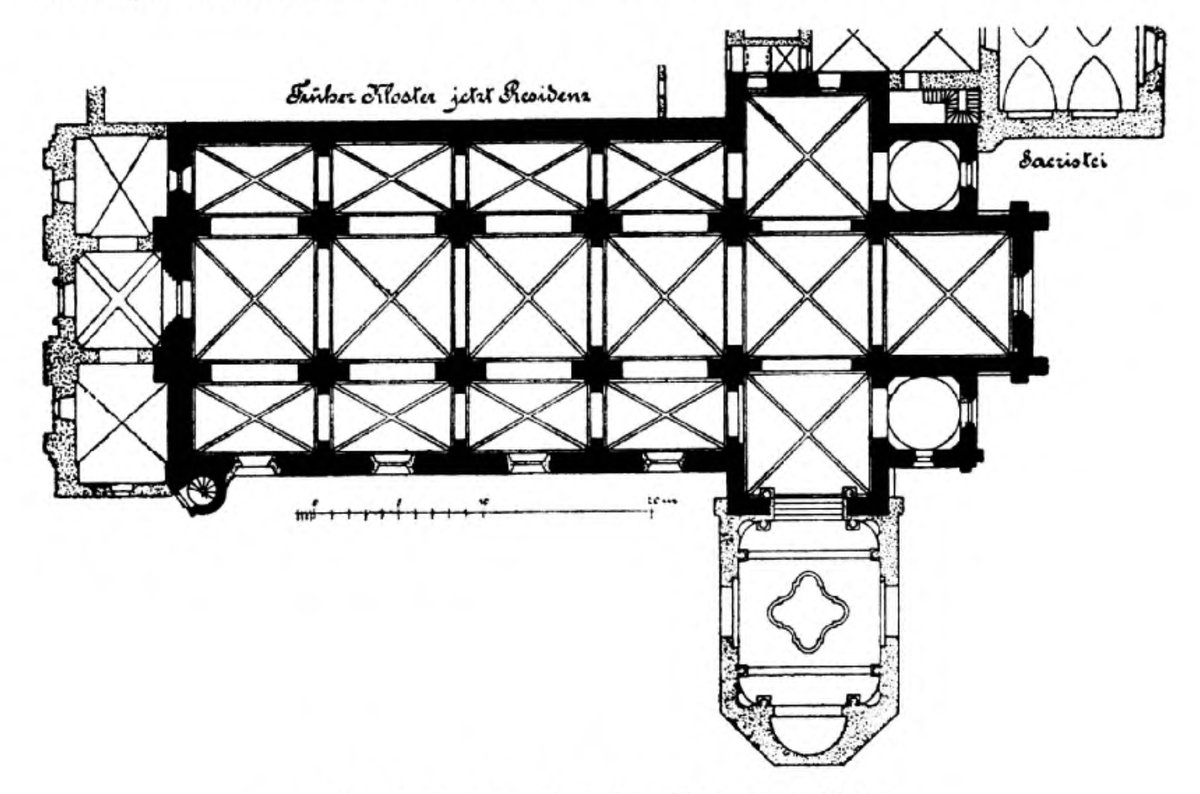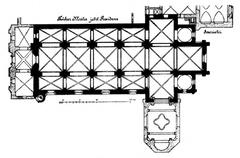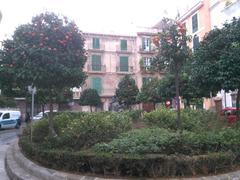
Kościół pw. Wniebowzięcia Najświętszej Maryi Panny Visiting Guide: History, Tickets, and More
Date: 25/07/2024
Introduction
Visiting historical sites in Poland offers a unique glimpse into the country’s rich cultural and religious heritage. One such site is the Church of the Assumption of the Blessed Virgin Mary in Rybnik, also known as Kościół pw. Wniebowzięcia Najświętszej Maryi Panny. This church is an architectural marvel that encapsulates the evolution of styles from the Gothic to the Baroque period, and it stands as a testament to the region’s resilient history. Originally constructed in the 12th century, the church has undergone numerous transformations, from its humble Romanesque beginnings under Mieszko I Plątonogi to its current form, reflecting an amalgamation of Gothic, Baroque, and Rococo styles. It’s not just the architectural splendor that draws visitors but also the stories of survival and adaptation through tumultuous periods, including both World Wars, during which the church remarkably remained intact (Zabytek.pl, Wikipedia). This guide provides detailed information on the church’s history, visiting hours, tickets, nearby attractions, and travel tips, ensuring you have all you need for an enriching visit.
Table of Contents
Historical Background
Origins and Early History
The Kościół pw. Wniebowzięcia Najświętszej Maryi Panny, also known as the Church of the Assumption of the Blessed Virgin Mary, is a significant historical and religious site located in Rybnik, Poland. The church’s origins date back to the early medieval period, with the first documented mention of a church on this site appearing in the 14th century. This early structure was likely a modest wooden building, serving the local Catholic community.
Architectural Evolution
The current brick structure of the church was constructed between 1661 and 1681, during the Baroque period, under the direction of the architect Isidoro Affaita the Elder. The Baroque style is evident in the church’s elaborate interior decorations, characterized by intricate stucco work, ornate altars, and grandiose frescoes. The church’s façade, however, underwent significant changes in the late 18th century, adopting a more classicist appearance while retaining some Baroque elements (Archwwa).
Role During the Wars
Remarkably, the church survived the tumultuous periods of both World Wars without significant damage. During World War II, many buildings in Warsaw and other parts of Poland were destroyed, but the Church of the Assumption of the Blessed Virgin Mary remained intact. This preservation allowed it to serve as a temporary pro-cathedral for the Archdiocese of Warsaw from 1945 to 1952, until the reconstruction of St. John’s Cathedral was completed (Wikipedia).
Post-War Period and Modern Times
In 1965, the church, along with the associated Carmelite monastery complex, was officially listed in the register of historical monuments. This designation has helped ensure the preservation and maintenance of the church’s historical and architectural integrity. The church continues to function as a place of worship and is also used by the Higher Metropolitan Seminary in Warsaw (Archwwa).
Architectural Highlights
Exterior Features
The church’s exterior is notable for its classicist façade, which includes a portal made from black-green marble. Above the portal, there is a cartouche bearing the Radziwiłł family coat of arms, a nod to the benefactors who funded the façade’s construction. Higher up, two small bell towers, designed to resemble incense burners, add to the church’s unique silhouette. In 2000, new bells were installed, each with a name and inscription - “Omni die dic Mariae” (Every day praise Mary), “Ite ad Joseph” (Go to Joseph), and “Vox In Deserto” (Voice in the Desert) (Archwwa).
Interior Features
Inside, the church retains its Baroque grandeur. The main altar is a focal point, adorned with statues and intricate carvings. The ceiling frescoes depict various scenes from the life of the Virgin Mary and other biblical events, painted in vibrant colors that have been carefully restored over the years. The side altars and chapels are equally ornate, each dedicated to different saints and religious figures, reflecting the rich devotional practices of the Catholic Church.
Visitor Information
Tickets and Opening Hours
The Church of the Assumption of the Blessed Virgin Mary is open to visitors daily. While there is no entrance fee, donations are appreciated to help with the church’s maintenance and preservation. Guided tours are available and can be booked in advance through the church’s official website or at the entrance.
Accessibility
The church is accessible to visitors with disabilities. Ramps and designated seating areas ensure that everyone can enjoy the church’s beauty and history.
Special Events and Tours
Throughout the year, the church hosts various religious and cultural events. Guided tours offer detailed insights into the church’s history and architecture. Check the church’s website for the most current schedule of events and tours.
Travel Tips
How to Get There
Rybnik is well-connected by train and bus services. The church is located in the city center, making it easily accessible by public transport or on foot.
Nearby Attractions
While in Rybnik, visitors can also explore other historical sites such as the Rybnik Castle and the Municipal Museum. The city park offers a peaceful retreat and is perfect for a leisurely stroll.
FAQ
What are the opening hours of the Church of the Assumption of the Blessed Virgin Mary?
The church is open daily from 8:00 AM to 6:00 PM.
Is there an entrance fee for the Church of the Assumption of the Blessed Virgin Mary?
No, there is no entrance fee, but donations are welcome.
Are guided tours available?
Yes, guided tours are available and can be booked in advance.
Conclusion
The Kościół pw. Wniebowzięcia Najświętszej Maryi Panny in Rybnik stands as a testament to the enduring faith and cultural heritage of the Polish people. Its historical significance, architectural beauty, and role in the community make it a vital part of Poland’s religious landscape. Visitors to the church can not only appreciate its aesthetic and historical value but also gain a deeper understanding of the region’s cultural and religious history. Plan your visit today and immerse yourself in this remarkable historical site.
References
- Archwwa. (n.d.). Kościół Seminaryjny pw. Wniebowzięcia NMP i św. Józefa Oblubieńca w Warszawie. Retrieved from https://archwwa.pl/miejsca/kosciol-seminaryjny-pw-wniebowziecia-nmp-i-sw-jozefa-oblubienca/
- Wikipedia. (n.d.). Kościół Wniebowzięcia Najświętszej Maryi Panny i św. Józefa Oblubieńca w Warszawie. Retrieved from https://pl.wikipedia.org/wiki/Kościół_Wniebowzięcia_Najświętszej_Maryi_Panny_i_św._Józefa_Oblubieńca_w_Warszawie
- Zabytek. (n.d.). Rybnik - Kościół pw. Wniebowzięcia NMP. Retrieved from https://zabytek.pl/pl/obiekty/rybnik-kosciol-pw-wniebowziecia-nmp
- Wikipedia. (n.d.). Kościół Najświętszej Maryi Panny Wniebowziętej w Kościanie. Retrieved from https://pl.wikipedia.org/wiki/Kościół_Najświętszej_Maryi_Panny_Wniebowziętej_w_Kościanie

